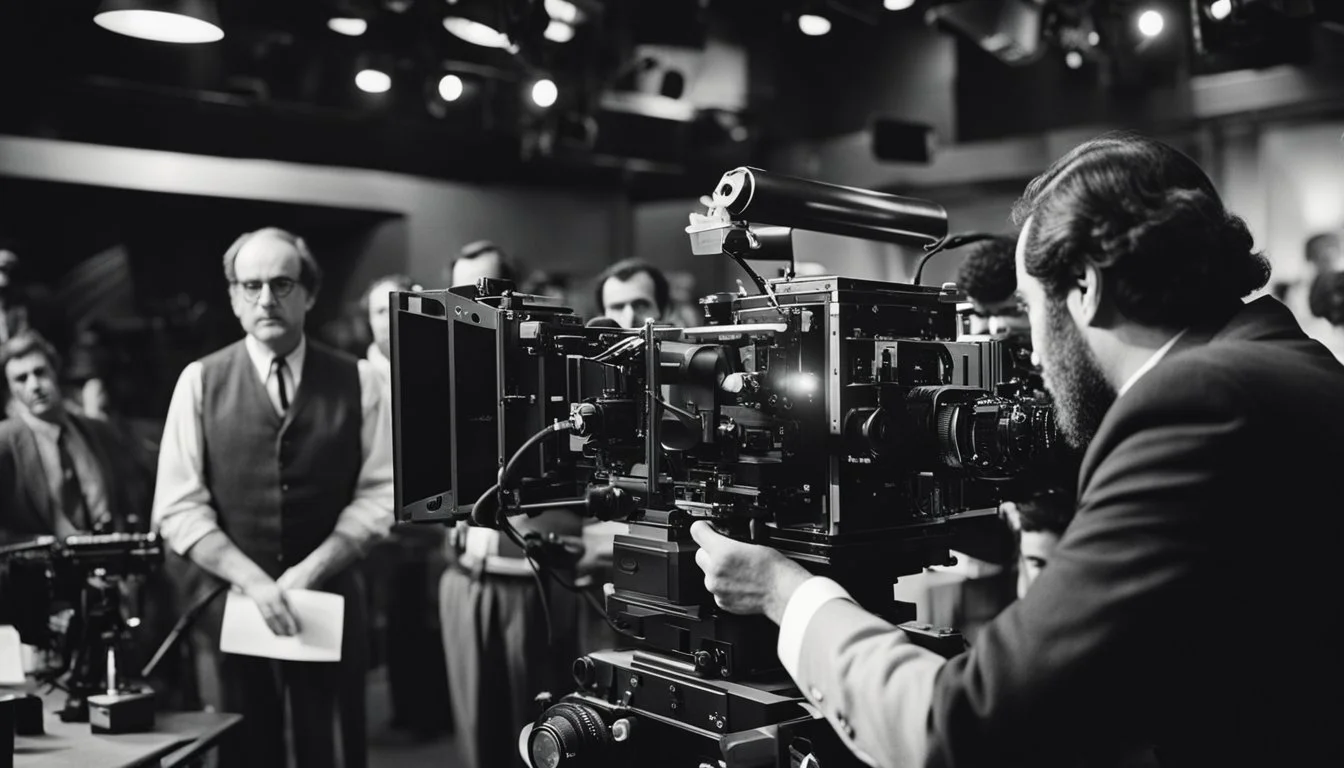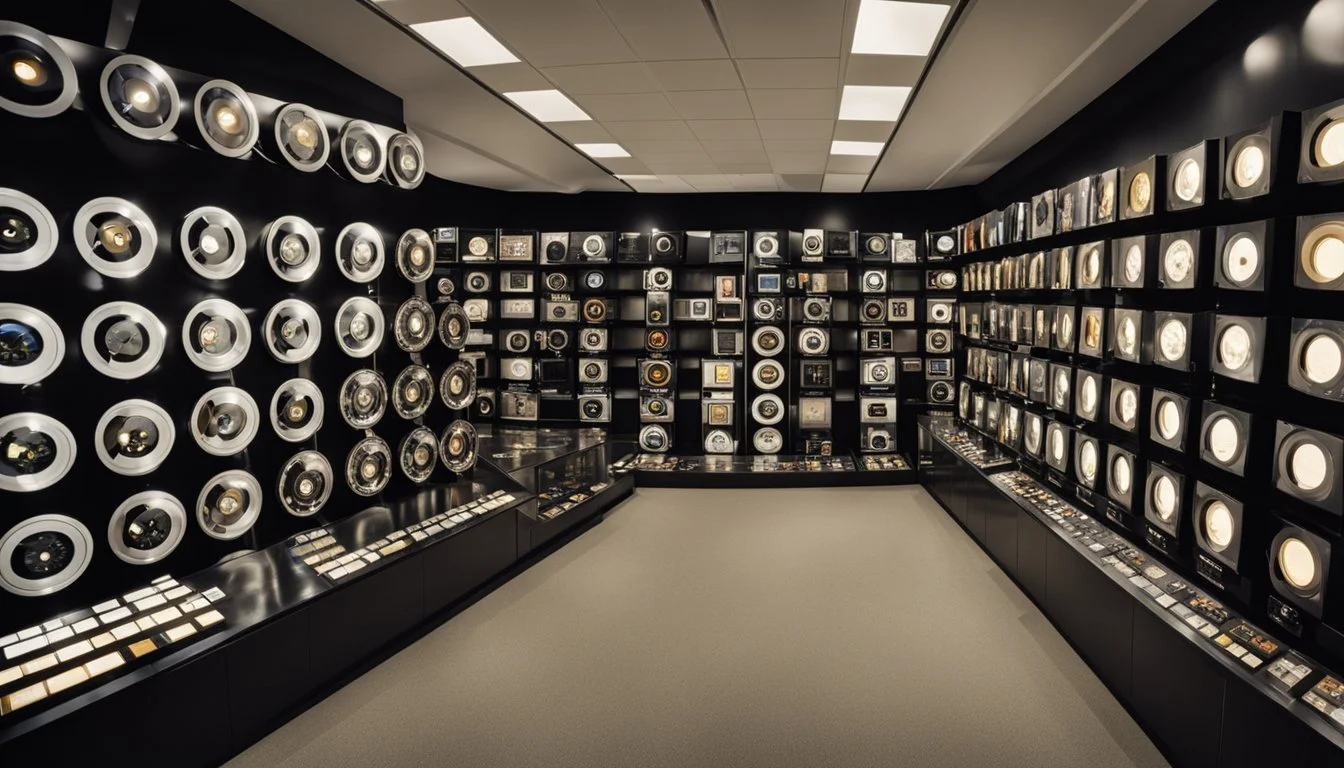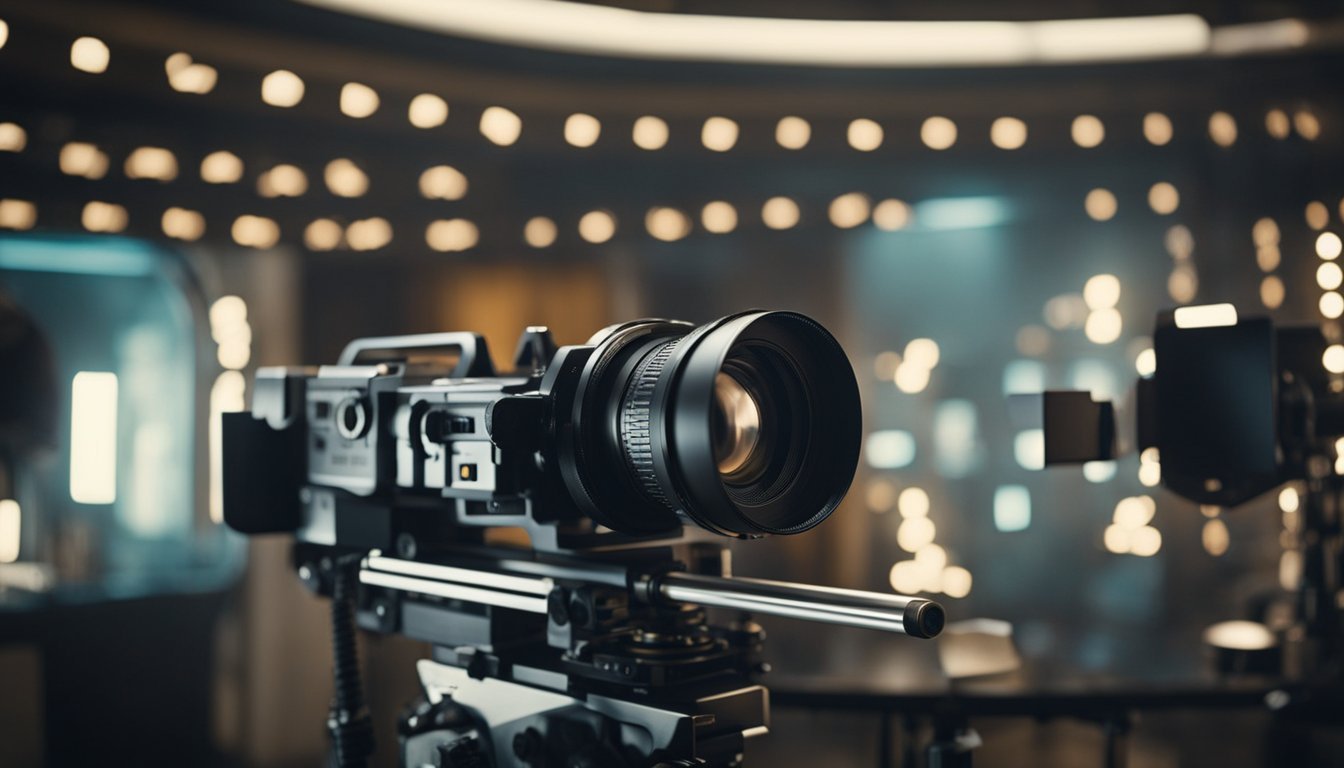Stanley Kubrick: Pushing the Boundaries of Nonfiction Filmmaking Innovations
Stanley Kubrick was a prolific filmmaker renowned for his masterful storytelling and innovative techniques across various genres. While his name is often associated with landmark science fiction films like "2001: A Space Odyssey," he also made significant contributions to nonfiction filmmaking, pushing its boundaries and elevating its artistic and narrative potential. His approach to nonfiction was characterized by meticulous attention to detail and an unflinching commitment to authenticity.
Kubrick's journey in nonfiction filmmaking began with documentaries like "Day of the Fight" and "The Seafarers," where he employed groundbreaking cinematographic techniques that would later define his acclaimed fiction works. These early projects showcased his talent for creating compelling narratives from real-life events, demonstrating an ability to blend factual reporting with cinematic flair.
By integrating dramatic elements into his nonfiction films, Kubrick not only informed but also engaged his audience on a deeper emotional level. His works illustrate how nonfiction can be as immersive and thought-provoking as any fictional narrative, challenging the conventional boundaries of the genre.
The Life of Stanley Kubrick
Stanley Kubrick, born in New York City, was a pioneering filmmaker whose work continues to influence cinema today. This section delves into his formative years and early career, laying the foundation for his later successes.
Early Years and Education
Stanley Kubrick was born on July 26, 1928, in the Bronx, New York City. His parents were Jacques, a physician, and Sadie Kubrick. Early on, Kubrick demonstrated a keen intellect and a fascination with photography, which his father nurtured by gifting him a camera at the age of 13.
He attended William Howard Taft High School but struggled academically. Despite his poor grades, Kubrick exhibited exceptional skill in photography, contributing to the school paper. His passion for still images would later transition into a groundbreaking career in filmmaking.
Initial Foray into Filmmaking
Kubrick's initial steps into filmmaking began with short documentaries. His first short, Day of the Fight (1951), was financed independently and showcased in theaters by RKO Pictures. This documentary highlighted his keen eye for detail and narrative.
He followed this success with Flying Padre (1951) and The Seafarers (1953). In 1953, Kubrick created his first feature film, Fear and Desire. Although it wasn’t commercially successful, it showcased his unique vision. Learning from this experience, he produced Killer's Kiss (1955) and The Killing (1956), cementing his place in the film industry.
Kubrick's Filmmaking Style
Stanley Kubrick's filmmaking style is renowned for its distinctive visual storytelling, innovative use of music, and complex collaborations with actors. These elements combine to create a unique and captivating cinematic experience.
Visual Storytelling Techniques
Kubrick was a master of visual storytelling. He often employed symmetrical compositions and used one-point perspective shots to draw the viewer's eye directly to the center.
His meticulous attention to detail is evident in every frame, with carefully crafted sets and precise camera movements. Kubrick also favored long takes and slow zooms, enhancing the immersive quality of his films.
Lighting played a critical role in his work. For instance, in "Barry Lyndon," he used natural lighting and candlelight to create an authentic 18th-century feel.
Innovative Use of Music
Music in Kubrick's films is more than just a background element; it becomes a character in its own right. He often chose classical pieces to underscore dramatic moments, such as Richard Strauss's "Also Sprach Zarathustra" in 2001: A Space Odyssey.
Kubrick's selection of music was highly intentional, setting the tone and mood for scenes and often contrasting sharply with the visuals to create a jarring, memorable effect. His repeated use of composers such as György Ligeti and Wendy Carlos helped establish a unique auditory identity.
Collaborations with Actors
Kubrick's collaboration with actors was intensive and demanding. Known for requiring numerous takes, he pushed actors to explore their characters deeply. Shelley Duvall's performance in The Shining is a prime example, where Kubrick's relentless direction led to a psychologically taxing but unforgettable portrayal.
Yet, many actors who worked with him appreciated his detailed direction and the freedom to delve into their characters. Malcolm McDowell in A Clockwork Orange and Peter Sellers in Dr. Strangelove benefited from this approach, delivering iconic performances that define their careers.
Kubrick's ability to guide actors while maintaining his vision was a hallmark of his style. These collaborations resulted in some of the most memorable performances in cinematic history.
Major Works and Achievements
Stanley Kubrick's filmography showcases his innovative approach to storytelling and visual composition. His major works span a variety of genres and reflect his unique vision and meticulous craft.
Paths of Glory and Spartacus
Paths of Glory (1957) stands as one of Kubrick's early masterpieces, delving into the futility and brutality of war. Starring Kirk Douglas, this film is notable for its unflinching examination of military hierarchy and the moral ambiguities of command.
In Spartacus (1960), Kubrick again collaborated with Douglas. Though faced with significant studio control, Kubrick's directional stamp is evident. The film's grand scale and complex character dynamics laid the groundwork for future epics.
2001: A Space Odyssey
2001: A Space Odyssey (1968) is often hailed as Kubrick's magnum opus. Collaborating with Arthur C. Clarke, Kubrick crafted a visually stunning and philosophically rich narrative that redefined the science fiction genre.
The film's innovative special effects and cryptic storytelling continue to inspire filmmakers and audiences alike. Its thematic exploration of human evolution, artificial intelligence, and extraterrestrial life has made it a seminal work in cinema history.
A Clockwork Orange and The Shining
A Clockwork Orange (1971) is a dystopian examination of free will and societal control based on Anthony Burgess's novel. Kubrick's use of striking visual and auditory elements creates an unsettling and thought-provoking experience.
The Shining (1980), adapted from Stephen King's novel, further cemented Kubrick's reputation for psychological horror. Jack Nicholson's iconic performance and the film's haunting imagery have left a lasting impact on the genre.
Full Metal Jacket and Eyes Wide Shut
Full Metal Jacket (1987) offers a harrowing look at the dehumanizing effects of the Vietnam War. The film's dual structure, focusing on both the training of Marines and the war's frontline horrors, provides a comprehensive perspective on military life.
Kubrick's final film, Eyes Wide Shut (1999), explores complex themes of fidelity and sexual desire. Starring Tom Cruise and Nicole Kidman, the film’s meticulous attention to detail and atmospheric tension reflect Kubrick's enduring artistic precision.
Thematic Elements
Stanley Kubrick's films often focus on the complexity of human behavior, scrutinize societal norms and structures, and grapple with themes of war and violence.
Exploration of Human Nature
In works like "2001: A Space Odyssey" and "A Clockwork Orange," Kubrick delves into the intricacies of human nature. He examines the primal instincts that drive human actions, often juxtaposing them with advanced technology or societal norms. "2001: A Space Odyssey" explores evolution and the human condition, questioning what it means to be human in an age of technological advancement.
"A Clockwork Orange" scrutinizes the nature of free will and moral choice, portraying a dystopian world where state control challenges fundamental human freedoms. Kubrick’s nuanced portrayal of characters often blurs the lines between good and evil, compelling viewers to reflect on their own humanity.
Critique of Societal Structures
Kubrick frequently examines and critiques societal and institutional structures. In "Dr. Strangelove," he satirizes Cold War politics, highlighting the absurdities and dangers of nuclear brinkmanship. The film reveals the folly of political and military elites, using dark comedy to underscore serious implications.
"Eyes Wide Shut" addresses themes of secrecy and elitism within society, revealing the hidden underworlds that influence societal behavior. Through meticulous set design and symbolic storytelling, Kubrick exposes the vulnerabilities and corruptions within societal hierarchies.
Kubrick's films often challenge audiences to question the status quo and consider the flaws and potentials for reform within existing societal systems. His critiques are both broad and incisive, shedding light on the often-overlooked details that perpetuate systemic issues.
Recurring Themes of War and Violence
War and violence are recurring themes in Kubrick’s work. "Full Metal Jacket" provides a raw depiction of the Vietnam War, focusing on the psychological transformation of soldiers and the dehumanizing effects of military conflict. The film’s stark realism and brutal honesty highlight the futility and horror of war.
In "Paths of Glory," Kubrick explores military injustice and the individual's fight against corrupt command structures. The film portrays the grim realities of trench warfare and the moral dilemmas faced by soldiers. Kubrick’s treatment of violence is both explicit and nuanced, often serving as a critique of the systems that perpetuate conflict.
Kubrick’s exploration of war and violence extends beyond the battlefield, reflecting on how these elements shape and are shaped by human nature and societal structures.
Technical Innovations
Stanley Kubrick revolutionized filmmaking with groundbreaking technical advancements that enhanced film editing, camera stability, and realistic effects. His innovations have left an indelible mark on the industry, influencing countless directors and cinematographers.
Advancements in Film Editing
Kubrick's meticulous approach to film editing set new standards in the industry. By personally overseeing the editing process, he ensured that each cut served the narrative.
In "2001: A Space Odyssey," Kubrick employed jump cuts to depict the passage of time, which was revolutionary for its time. His use of match cuts, such as the bone-to-satellite transition, became iconic and demonstrated his ability to connect disparate scenes seamlessly.
Kubrick's editing style emphasized precision and rhythm, effectively using silence and minimalistic music to heighten tension. This attention to detail allowed his films to maintain a fluid pace while keeping the audience engaged.
Pioneering Use of Steadicam
Stanley Kubrick was one of the first directors to use the Steadicam, a stabilizing camera mount, to achieve smooth and fluid shots. This innovation was prominently featured in "The Shining."
The Steadicam allowed for continuous, stable motion in scenes like Danny's tricycle ride through the Overlook Hotel, creating an immersive and eerie atmosphere. Kubrick’s use of this technology enabled more dynamic camera movements without the need for tracks or cranes.
This technique added a new layer of visual storytelling, providing viewers with a more intimate and unsettling perspective.
In-camera Effects and Practical Effects
Kubrick preferred in-camera effects and practical effects, achieving realism without relying heavily on post-production. In "2001: A Space Odyssey," Kubrick used rotating sets and front projection to create realistic space scenes.
Rather than opting for computer-generated imagery, he employed practical effects like centrifugal force to simulate zero gravity. Kubrick's dedication to realism extended to "Barry Lyndon," where he utilized NASA-manufactured lenses to film scenes by candlelight.
These innovations not only provided a more authentic visual experience but also set a high standard for practical effects in future filmmaking. By pushing the boundaries of traditional filmmaking techniques, Kubrick cemented his legacy as a technical pioneer.
Influence and Legacy
Stanley Kubrick's impact on filmmaking is immense, shaping both the works of future filmmakers and the critical discourse surrounding cinema. His meticulous approach to film preservation ensures that his artistic vision endures for future generations.
Impact on Future Filmmakers
Kubrick's techniques and thematic explorations have inspired countless filmmakers. Directors such as Christopher Nolan and Steven Spielberg often cite Kubrick as a major influence. His use of groundbreaking special effects in "2001: A Space Odyssey" set a new standard for science fiction films.
Kubrick's narrative complexity and visual innovation continue to serve as benchmarks. His ability to blend genres and challenge traditional storytelling conventions resonates with aspiring filmmakers who seek to push boundaries in their own work.
Kubrick's Role in Film Criticism
Kubrick's films are frequently analyzed in film criticism courses worldwide for their thematic depth and technical prowess. Critics often explore his unique approach to storytelling, focusing on his manipulation of time, space, and perspective.
His works have fueled numerous scholarly articles and debates. Kubrick's role in film criticism highlights his status not only as a filmmaker but also as a subject of study in cinematic arts, contributing to ongoing conversations about film as an art form.
Preservation of Kubrick's Work
Efforts to preserve Kubrick's work have been extensive, ensuring that his films remain accessible to future audiences. Organizations such as the Stanley Kubrick Archive and various film restoration groups have undertaken initiatives to maintain the quality and integrity of his films.
These preservation projects are crucial in maintaining the original vision and technical details that Kubrick meticulously crafted. Digital restoration and archival efforts help keep his films in pristine condition, allowing new generations to experience his groundbreaking work as originally intended.
Comparative Analysis
Stanley Kubrick's innovative approach to nonfiction filmmaking set him apart from his contemporaries and significantly influenced fictional narratives across genres. This section delves into his distinct methods and their impact compared to other directors of his time.
Kubrick vs Contemporary Directors
Kubrick's meticulous attention to detail and experimental techniques often outmatched those of contemporary filmmakers. Directors like Alfred Hitchcock and Francis Ford Coppola shared his dedication to craft, but Kubrick notably pushed boundaries with his unique approach to realism and storytelling.
Kubrick's use of real-life events and extensive research gave his films a sense of authenticity rarely seen. While Coppola dramatized historical events like in The Godfather, Kubrick's interpretation in films like Paths of Glory set new standards for war films.
Unlike Hitchcock, who focused on psychological tension, Kubrick combined intense study with innovative camera work and special effects. This allowed his films to bridge the gap between gritty realism and surreal artistry.
Nonfiction Influence on Fictional Narratives
Kubrick's nonfiction methodology had a profound impact on his fictional works, enriching them with depth and credibility. His deep dives into subjects, whether technical or thematic, resulted in highly realistic portrayals that resonated with audiences and critics alike.
In 2001: A Space Odyssey, Kubrick collaborated with experts to depict space travel accurately. This blurred the lines between fiction and documentary, making the film a benchmark for science fiction.
Similarly, in Full Metal Jacket, his portrayal of military training and combat was grounded in exhaustive research and consultations with veterans. This approach influenced other filmmakers to incorporate detailed, fact-based elements into their narrative films, raising the bar for authenticity in cinematic storytelling.





